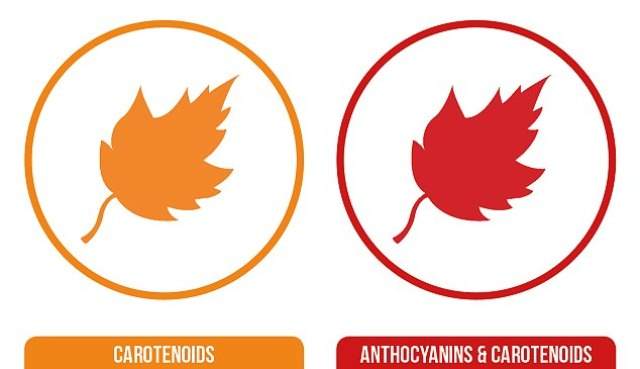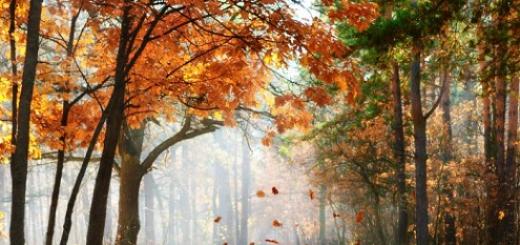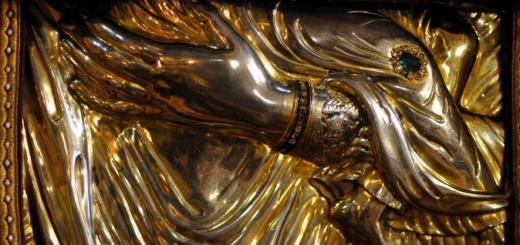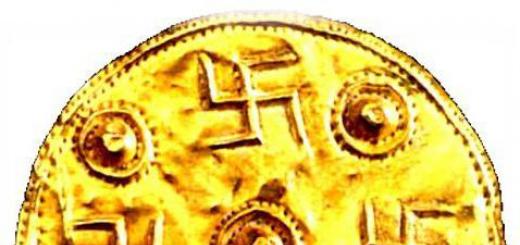We are accustomed to the fact that in autumn the foliage turns yellow and the trees drop them until spring. We admire the yellow foliage, admire the romanticism of autumn, but we don’t know why the yellowing of the leaves still occurs. And this, it turns out, has a scientific explanation.
For years, scientists have studied leaves and how they change color in the fall. molecules, which are responsible for the bright shades of yellow and orange, are no longer a mystery, and why the leaves turn red is still a mystery.


Responding to air temperature change and less daylight, the leaves stop producing chlorophyll(which gives green color), absorbing blue and partially red light emitted by the Sun.Since chlorophyll is sensitive to cold, some weather changes, such as early frosts, will "turn off" its production faster than usual.

At this time, orange and yellow pigments called carotenoids(which can also be found in carrots) and xanthophylls Shine through leaves that have no green left. "Yellow color is present in the leaves all summer, but it is not visible until the green disappears," says Paul Shaberg

"The yellow color is present in the leaves all summer, but it is not visible until the green disappears," says Paul Shaberg(Paul Schaberg), a plant physiologist with the US Forest Service. But scientists still have little information about the red color that appears on some leaves in the fall. It is known that the color red comes from anthocyanides, which, unlike carotenoids, are produced only in autumn. Anthocyanides also give color to strawberries, red apples and plums.
Trees produce anthocyanides when they sense a change in the environment - frost, ultraviolet radiation, drought and/or fungus. But red leaves are also a sign of illness tree. If you notice that the leaves of the tree turned red earlier than usual (at the end of August), most likely the tree is suffering from a fungus, or it has been damaged by a person somewhere.
Why does a tree spend its energy to work out
new anthocyanins in a leaf when that leaf is about to fall off?
Paul Schaberg believes that if anthocyanins help the leaves stay on the tree longer, they may help the tree absorb more nutrients before the leaves fall off. The tree can use the absorbed resources to bloom in the next season.
Anthocyanins
The topic of anthocyanins is a little more difficult to study than the rest of the tree components. While all trees contain chlorophyll, carotene, and xanthophylls, not all produce anthocyanins. Even those trees that have anthocyanins produce them only under certain conditions. Before a tree gets rid of its leaves, it tries to absorb as much more nutrients from the leaves, at which point anthocyanin comes into play.

Scientists have several answers to the question of why some trees produce this substance and the leaves change their color.
The most popular theory suggests that anthocyanins protect the leaves from excess sunlight, while allowing the tree to absorb the beneficial substances stored in the leaves.On the tree these pigments act as a sunscreen, blocking dangerous radiation and protecting the leaves from an excess of light. They also protect cells from rapid freezing. Their benefits can be compared with the benefits of antioxidants.
Too much sunlight, dry weather, freezing weather, low nutrient levels and other stressors increase the concentration of sugar in tree sap. This kicks off the mechanism to produce large amounts of anthocyanins in a last ditch effort to store energy to get through the winter.
Scientists believe that the study of anthocyanides helps to understand the level of the disease every tree. This, in turn, will give a clearer picture of environmental problems in the future.As the character of the book and cartoon spoke The Lorax: "The color of the trees will one day be able to tell us how the tree feels at the moment."










